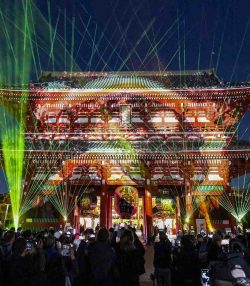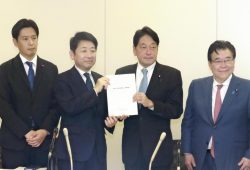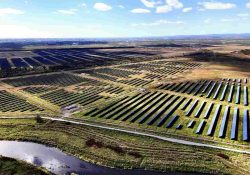16:27 JST, May 31, 2024
It has been determined that the deaths of eight people in an avalanche, including high school students, were due to the accompanying teachers taking the risks of snow-covered mountains lightly. Educators across the country need to take measures to prevent similar tragedies.
The avalanche occurred in March 2017. Eight people — students and a teacher — were killed during a snow mountaineering lesson as part of their club activities in the town of Nasu, Tochigi Prefecture. The Utsunomiya District Court has sentenced three defendants, including accompanying teachers, who were charged with professional negligence resulting in death and injury, to two years in prison each.
Heavy snow and avalanche warnings had been issued for areas around the avalanche site since the day before the accident. The point of contention in the trial was whether the defendants and others could have foreseen the danger of an avalanche due to the snowfall from the night before and whether they neglected their duty to conduct the lesson safely.
The ruling acknowledged that “new snowfall from the previous day had reached 30 centimeters, and it was sufficiently possible to foresee the risk of an avalanche.” Moreover, it said “the training session was conducted in a haphazard manner, lacking a sense of caution, even though it was an educational activity that had a strong need to ensure safety.”
In the harsh environment of the snow-covered mountain, the accompanying teachers and others were responsible for the lives of the high school students and others who participated in the training. The court probably saw the teachers as lacking awareness of their responsibility and failing to act prudently.
Due to the snowfall the night before the accident, the three defendants had canceled the group’s planned mountain climbing and changed to training for walking on snow. However, there was no indication that they fully considered the danger of the snow-covered mountain, and there was reportedly no common understanding among the accompanying teachers regarding the purpose of the training and the scope of their activities.
One of the defendants stated at a press conference after the accident, “I thought it was absolutely safe based on my experience.” It must be said that the handling of the situation based solely on experience caused an irreversible tragedy. The ruling also condemned the incident as a “man-made disaster caused by serious carelessness.”
To prevent a recurrence, it is essential for mountain climbing activities not to be left entirely in the hands of teachers in the field. Schools, the All Japan High School Athletic Federation and boards of education should work together to establish rules for safety measures and a system to check climbing plans in advance.
The Japan Sports Agency has requested that prefectures establish a “mountain climbing plan screening committee” composed of people who are familiar with mountain climbing. The committee would examine the qualifications of those who lead climbers and the safety of the routes, and if necessary, order improvements, the agency said.
Sudden changes in the weather often mean that mountain climbing does not go as planned. In some cases, climbers must be flexible and decide to turn back halfway up the mountains. One option may be to ask local mountain guides who know the mountains well to accompany climbers.
Climbing is an opportunity to learn independence and cooperation in nature. To that end, it should be kept in mind that “safety-first” preparations are an absolute must.
(From The Yomiuri Shimbun, May 31, 2024)
"Editorial & Columns" POPULAR ARTICLE
-

Violations of Subcontract Law: Major Automakers Must Eliminate Old Practices
-

Local Governments’ Tax Revenues: Devise Ways to Correct Imbalances in Tax Sources
-

5 Japanese Business Dinner Mistakes to Avoid — and What They Taught Me About Business in Japan
-

Heavy Rains in Asia: Support for Victims, Flood-Control Measures Urgently Needed
-

New Nuclear Threat: China Seeking to Follow U.S., Russia in Military Expansion
JN ACCESS RANKING
-

Keidanren Chairman Yoshinobu Tsutsui Visits Kashiwazaki-Kariwa Nuclear Power Plant; Inspects New Emergency Safety System
-

Imports of Rare Earths from China Facing Delays, May Be Caused by Deterioration of Japan-China Relations
-

University of Tokyo Professor Discusses Japanese Economic Security in Interview Ahead of Forum
-

Japan Pulls out of Vietnam Nuclear Project, Complicating Hanoi’s Power Plans
-

Govt Aims to Expand NISA Program Lineup, Abolish Age Restriction





















